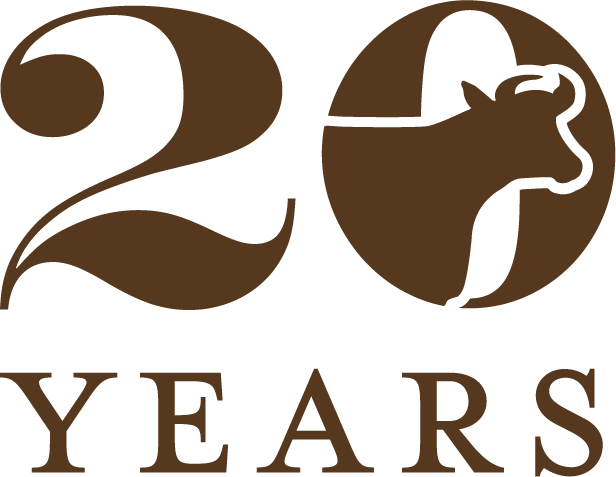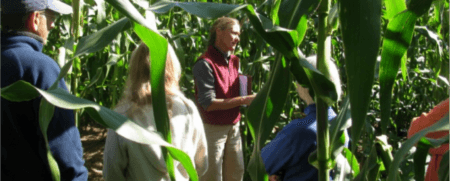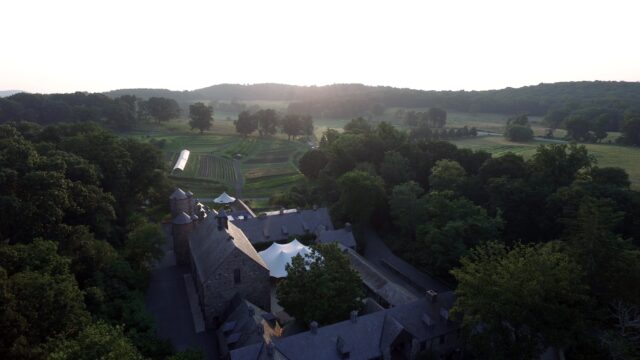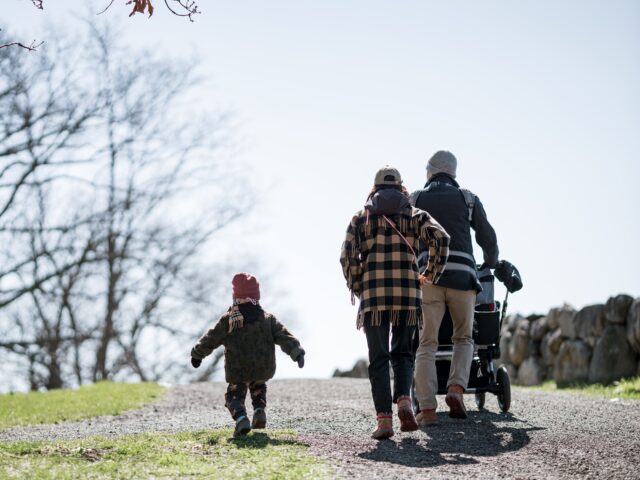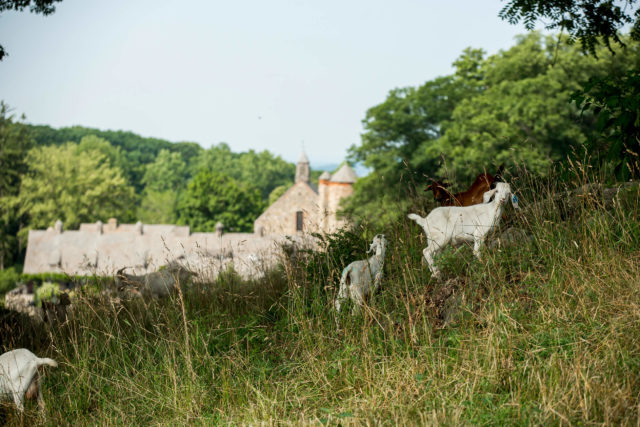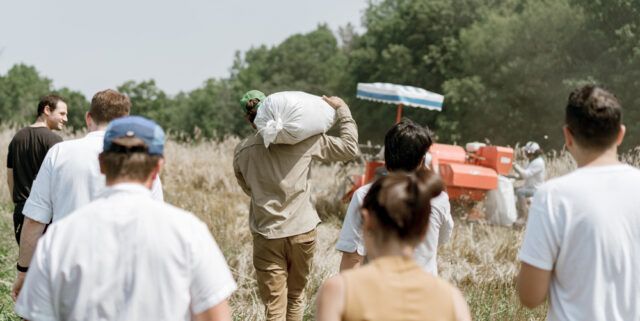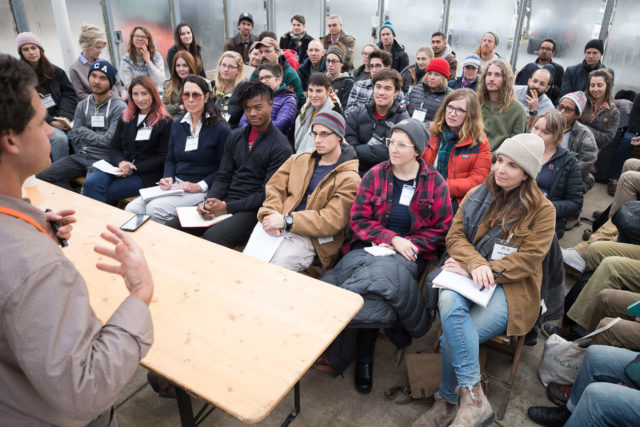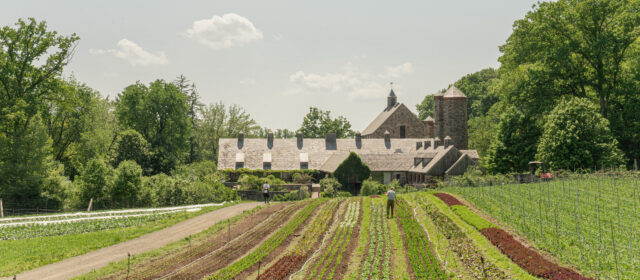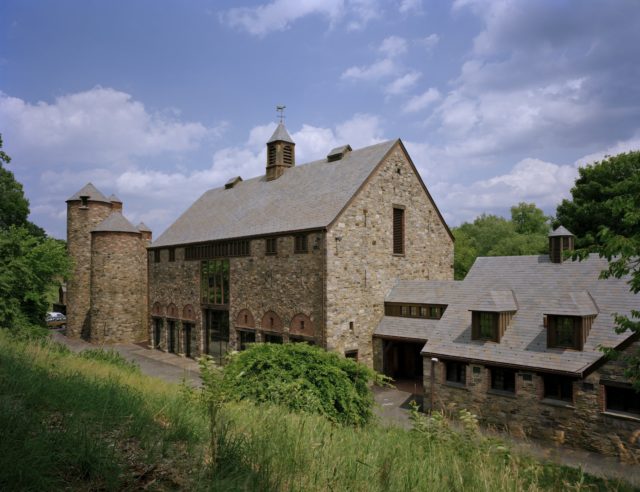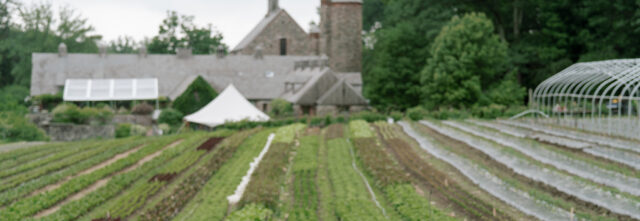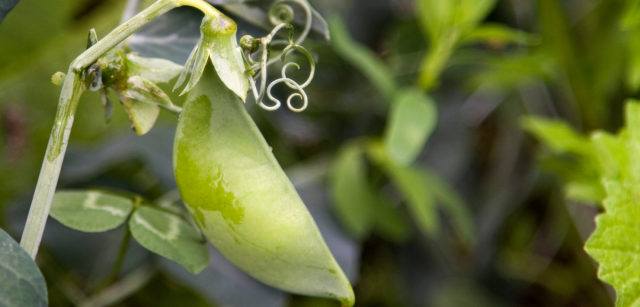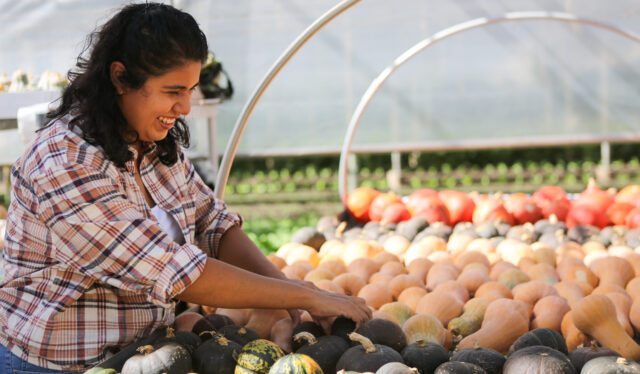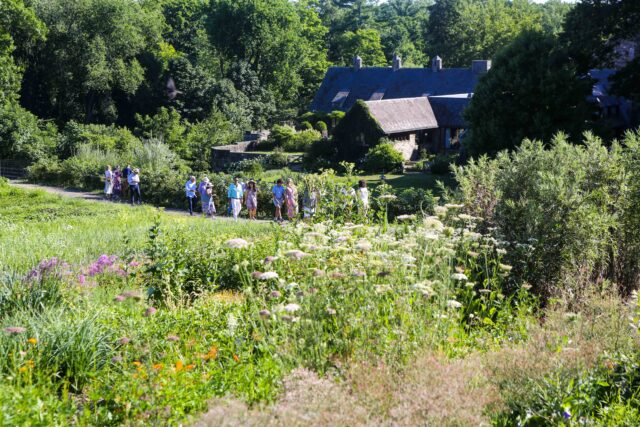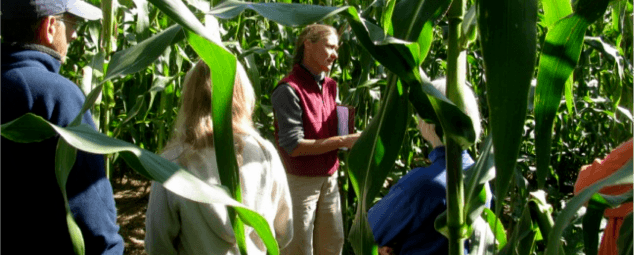Salamander Springs Farm
Susana Lein
Berea, KY
SNAPSHOT QUESTIONS
When did you start your farm?
I had a road built up and started clearing land in 2001; started building structures and finished a spring water system in 2002; began living from farm income in 2003; expanded grain and dry bean production 2005; moved into self-built tiny house and added solar electric in 2007; other buildings in subsequent years.
What do you produce?
Cornmeal, popcorn, pintos, black beans, cowpeas (plus others grains and pulses for on-farm use), a wide range of vegetables, fruits, berries, nuts, flowers and herbs – nutrient-dense food without soil tillage or mechanization and with very few purchased outside inputs.
How big is your farm?
Salamander Springs Farm is 23 acres, part of a 98-acre mostly-forested tract purchased by 4 parties with common land covenants established on entire tract. 2 1/2 acres farmed intensively (with up to 4 times production per area of cultivated systems); 3 acres of pasture development areas utilized for farm production, and forest foods and medicines also harvested. Average 12 chickens, 15 ducks, 2+ geese, 2 goats.
Where is it?
South of Berea, eastern Kentucky (Appalachian mountain region).
What is your soil type and topography?
Silty clay with shale (was eroded, devoid of topsoil); initial pH 4.5. Land was logged in 1930’s and 40’s, then run with hogs until 1970’s. The farm utilizes mostly south facing slopes 10-15%. Forested parts of land are much steeper and are geologically diverse, including both limestone and sandstone outcrops and creek bottoms.
Do you lease, rent or own your land?
Own.
What are your markets?
Two local farmers’ markets, CSA, local natural food store & cooperative grocery, two local restaurants, special events, online grain & dry beans sales.
IN-DEPTH QUESTIONS
What made you want to start your farm? What was your dream?
In 1999 I returned to the USA after 8 years working with indigenous farmers in Latin America, and was determined to regenerate and live from the land, instead of from the dehumanizing economic system now destroying the planet. I wanted to utilize permaculture principles to grow food for a local community and to live by developing and cycling local resources.
How were you involved in farming before you started your own farm?
I was raised and worked on a conventional Iowa grain and soybean farm, which was more diversified in the 1960’s and 70’s. I worked 8 years with sheep, poultry, raised 1 1/2 acres of vegetables, put up hay, worked with machinery in the fields. After university, I spent 7 years in the land planning/ architecture profession (San Francisco and Boston) during which I worked with urban community gardens and learned about permaculture at the New Alchemy Institute. I then spent 8 years in Latin America (1990’s) managing a demonstration farm, building appropriate technologies and implementing permaculture practices with indigenous small farmers. I started Salamander Springs Farm at 40 years of age.
How did you secure land and capital for your farm?
I saved $10,400 to buy unimproved land (in cash with a $1,200 short-term loan from a friend). In the first years I worked in construction off the farm while beginning to build soil and infrastructure with local lumber, salvage, clay and straw. After starting to live from farm income, I slowly continued to self-build infrastructure without debt. In last few years I have received two farmer grants for a grain mill and materials to build needed structures.
What problems did you run into in the planning stages?
Extremely poor land with no access to road, water, electricity, plumbing or built infrastructure. Money and time limitations, being only one person on the land. Predator pressure from national forest surrounding land.
What did your farm look like in year one?
A newly built steep road up to an overgrown meadow of briars, locust and cedar trees, some area cleared with a small garden and the first of fruit and nut trees planted. Hauled water from creek for tree plantings. Started building the gravity-fed spring water system, an open-air kitchen shack and composting outhouse of salvage materials. (See early photos in ppt teaching slides at: flickr.com/photos/salamanderspringsfarm/sets)
What were some challenges that you didn’t expect to have and how did you deal with them?
1) Predator pressure in gardens, grain and bean fields, was best solved by a training a Great Pyrenees dog.
2) My biggest challenges were from deciding to begin making my living from farming before having built much infrastructure on the land. My time was stretched thin between production and building, and the inefficiencies of farming for market without proper infrastructure took valuable time. I slowly overcame these limitations by working long hours in all seasons, creating community work parties allowing others to learn, and starting WWOOF and apprenticeship programs.
3) As the farm has grown, learning to manage a diversity of farm systems, work tasks and people became a new challenge. Establishing goals, weekly meetings and a clear daily work plan have been important.
4) With no credit history (in choosing a no debt/“pay as you go” path), lack of money has been a challenge when income declines, especially in early spring. The CSA model has helped fill these gaps. It also has required frugality and creativity in using salvage and local materials, developing local resources, nutrients, and energy before considering any purchase. Even with most resource & food needs supplied by the farm, money is still needed. Receiving two farm grants in recent years has helped me continue to build infrastructure.
What were some indicators in the beginning stages that made you optimistic for your farm’s success?
The non-mechanized/no-till grains and dry beans (on poor, non-agricultural soil) began producing more per acre than conventional organic. Rich, living soils developed in the no-till contour beds system were highly productive, healthy crops with very few purchased inputs and no tillage. Market demand grew with awareness of local organics. Began getting significant production from fruit and nut trees. Living well on a small income with no debt in a beautiful place and engaged community!
What have been some landmark events in your farm’s development? (equipment purchases, strategic decision, markets, etc.)
1) Completion of gravity-fed spring water system.
2) Success and expansion of the no-till continuous-cover grain & dry bean fields, 3-Sisters style cornfields, and feeding poultry from farm cover and forage crops.
3) Built and moved into a beautiful tiny house for under $4,000 and acquired a small solar electric system from a friend.
4) Worked to successfully relocate and expand local farmers’ market. Began CSA and diversified markets for farm products.
5) Reduced tomato production and made onions and potatoes the largest scale vegetable crops; at the same time, grains and dry beans replaced salsa and tomato juice as main value added products for year round income.
6) Began teaching on-farm workshops.
7) Completed corncrib, granary building and acquired grain mill.
Was there a point when you felt your farm became “established?”
By 2007 Salamander Springs Farm was the major, most well-known organic farm in the area. Also began getting many more requests to teach at organic and sustainable agriculture conferences. This link helps answer this question.
How have your goals changed?
My focus on developing healthy soil and markets has changed to completing building/infrastructure projects, passing on the intensive production to younger farmers, increasing outreach, teaching and on-farm workshops. Farming has not allowed time to fill the demand for on-farm courses.
How have you been successful? (financial, production, quality of life, etc.)
Farming and homesteading from scratch has provided a highly gratifying quality of life. Being instrumental in a tremendous development of our local economic system and an engaged community over the past decade has helped pave the way for others in our area to contribute local goods and services. Success is not measured in farm production or income, but rather the lack of debt and the ability to live well outside the prevailing economic system in a beautiful home and community, with good food, health, clean shelter, water and air. Being featured in the acclaimed 2015 permaculture documentary film, Inhabit (now translated into 5 languages) has been a wonderful affirmation of this life path.
Who or what can you credit for your successes?
Wisdom learned from mentors: Masunobu Fukuoka; Don Gavin Ca’al of Tactic, Guatemala; David Holmgren; E.F. Schumacher; Wendell Berry. Incorporating permaculture principles and practices into the farm design. Having built with on-site lumber, straw and clay dug to create ponds, and minimized dependence on outside inputs, resources, nutrients, and energy. Hard work and frugality, WWOOF and apprenticeship programs, community support.
What challenges does your farm face now and in the future?
As I age, I feel the need to pass on the physically challenging work of market farming to a younger generation and to develop a succession plan for that, including helping younger farmers build residence on the land for that transition. The limitations of working without a retirement plan or outside capital continue to be a challenge.
Where do you see your farm in five years?
More on-farm workshops and programs, younger farmers doing intensive market production. Larger workshop and community space built, more year-round managers!
What advice would you give to beginning farmers?
Make land improvements (earthworks/ ponds) and plant perennial (fruit/nut) crops first. Build basic infrastructure before making your living from farm income. Avoid debt. Pursue alternative funding sources. Learn to save your own seeds. Grow staple crops, and perennial/tree crops as well as vegetables. Integrate poultry and livestock into no-till farm systems. Diversity provides resilience. Include value-added products. Incorporate permaculture principles into the farm design to create and cycle local resources, nutrients, and energy on the farm; minimize dependence on outside inputs and resources. Avoid the plundering of soil health and nutrients by tillage!
—
More on Salamander Springs Farm:
flickr.com/photos/salamanderspringsfarm/sets
localharvest.org/salamander-springs-farm-susanas-perma-organics-M5606
From the 2015 Young Farmers Preconference — “This Is How We Do It: Learning From Successful Farm Models.”
Originally published on March 14, 2016
